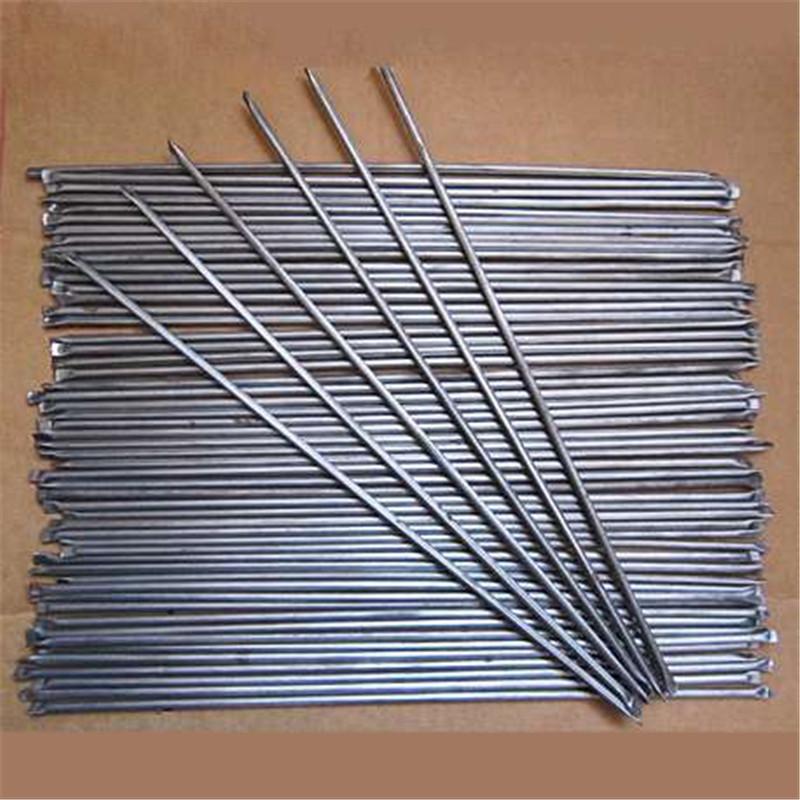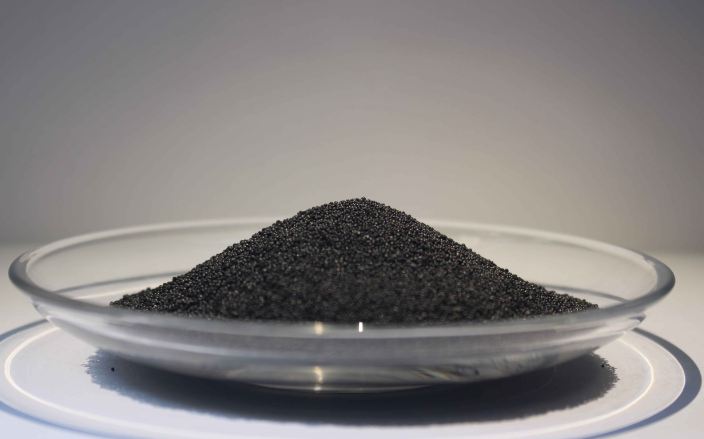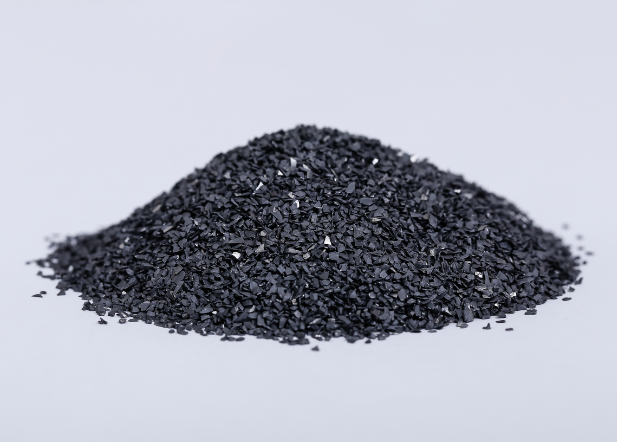Sludge has high moisture content, contains a large number of pathogens and microorganisms and other pests, high levels of heavy metals and organic matter, if not treated before discharge, it will cause secondary pollution to the environment. Therefore, how to introduce a quick and effective sludge dewatering technology in sewage treatment plants needs to be solved urgently. Sludge dehydration is not optimistic about the status of the urgent need to introduce rapid dehydration technology With the increasing emphasis on sewage treatment in various countries and the continuous construction of new urban sewage treatment plants, the output of sludge has been continuously increasing. Therefore, the rapid and effective treatment of sludge has become urgent. Sludge has high moisture content, contains a large number of pathogens and microorganisms and other pests, high levels of heavy metals and organic matter, if not treated before discharge, it will cause secondary pollution to the environment. Under normal circumstances, the cost of sludge treatment up to the entire sewage treatment plant construction and operation costs of 50% to 60%, therefore, the sludge treatment is facing a huge challenge. Sludge treatment principle is to achieve sludge reduction, stabilization, decontamination and recycling, of which sludge reduction is undoubtedly the key to sludge treatment and sludge disposal. Sludge reduction can be two ways, one is to reduce the content of organic matter in the sludge, the second is to reduce the sludge moisture content. The second route is simpler and easier to implement than the first route, both technically and financially. The purpose of sludge dewatering is to remove large amounts of water in the sludge, thereby reducing its volume and weight, in order to facilitate the sludge transport and further processing. Studies have shown that if the sludge moisture content from about 99.3% to 60% to 80%, the volume can be reduced to 1/10 ~ 1/15 of the original volume, greatly reducing the cost of sludge outbound and further The amount of leachate produced during the treatment. Although sludge dewatering theory and technology have achieved great development, sludge dewatering is still a major technical challenge for wastewater treatment projects. This article summarizes the development characteristics and existing problems of sludge dewatering from two aspects of theory and technology. The microscopic process of sludge dewatering is analyzed emphatically from the perspective of drainage channel. It is concluded that the microscopic study of sludge dewatering can not combine the sludge solid particles with Water separated, but should be the drainage channel as a "link" to treat it as a whole, the microscopic study of sludge dewatering should focus on the drainage channel from the perspective of its clogging mechanism. Then, the status of sludge dewatering in WWTPs at home and abroad is emphatically introduced, and the essence, theoretical core and technical core of sludge dewatering are elucidated based on the multi-field joint effects. Finally, on the basis of summarizing the status of sludge dewatering, Direction of development. Sludge Dehydration Theory and Technology Sludge dewatering is a solid-liquid separation process, the basic theory is based on the theory of filtration, infiltration, sediment and other developed. The theoretical study of sludge dewatering began in the 1930s. From the 30s to the 60s of the 20th century, the theoretical research of sludge dewatering mainly lies in the founding of the basic theory. The concrete manifestation is the establishment of the basic concept and the establishment and amendment of the dehydration model. Cogger and Merker realized the concept of filter aid, relying solely on the difficulty of mechanically dewatered sludge and its unsatisfactory results. Later appeared flocculation dehydration, ultrasonic dehydration, electrodialysis dehydration and other technologies, in essence, belong to the category of filter aid. In the 1970s and 1990s, scholars gradually turned their research focus from the dehydration model to the physicochemical properties of sludge. Based on the analysis of physical properties, the influencing factors of sludge dewatering performance were discussed. At the same time, sludge conditioning and modification technology began to develop. The physicochemical properties of sludge, such as the size, shape, composition and the like of solid particles, have drawn much attention. Based on the study of sludge physical properties, the technology of sludge conditioning and modification based on physics, chemistry and biology has started to develop. However, the study of sludge conditioning and modification in this period remains in the pursuit of macroscopic improvement of sludge dewatering performance and efficiency, and lack of mechanism analysis of the modification and modification at the microscopic scale. Since 1990s, on the basis of continuous development of sludge conditioning and modification technology, electroosmosis technology, flocculation technology and ultrasonic technology have drawn attention. Mechanical dewatering instead of natural drying has become the main water treatment plant dehydration technology, but due to the traditional mechanical dewatering effect is not satisfactory, there are many new technologies and many shortcomings can not be overcome in time, many scholars try to solve the problem from a micro scale, sludge The research of water is getting more and more attention. In fact, as early as 1956, Heukele Kian and Weinberg proposed to separate the water in the sludge into two types of free water and bound water, but such a simple classification obviously can not satisfy the study of sludge dewatering. Tsang et al. Classified the water in the sludge into free water, interstitial water, adsorbed water and bound water according to the contact relationship between the sludge solid particles and water. In the next 20 years, many scholars have carried out a series of theoretical and experimental research on the water in sludge, and have made a great deal of achievements, which are summarized in several aspects: the distribution of water in sludge, combined with the water content test Technology, combined with water on the sludge dewatering performance. Based on the previous studies on the bound water in sludge, some scholars have made good use of the combined water as a "bridge" to improve the sludge dewatering performance.
1.Welding materials
In
Welding, substances called filler materials or consumables are used. As the
name implies, these substances provide filler or a body of molten materials
that provides a strong bond to be formed between the base metals used. Most
welding processes will also require some form of shielding to protect both the
main components and filler from being oxidized during the process.
The
type of welding materials used during welding depends on the nature of the job
intended. Electrodes draw the necessary energy in order to perform welding
applications. Luoyang Golden Egret Company has any kind of welding materials
include CTC Welding Rod /rope, SCTC welding rod/rope, TC electronic welding rod,
Ni-based welding rod, flux-cored Welding Wires, solid welding wires and etc.
Welding
can be applied in different kinds of industries such as building and
construction, oil and gas, marine, power generation, steel, mine tools,
automobile, transportation and etc.
2. Welding rod
1)Cast tungsten carbide based tubular
rod
The
hard phase of the rod is cast tungsten carbide which leads to higher hardness
and better wear-resistance.
Wear
resistance: the wear resistance is 6-7 times better than others. Tested by ASTM
G65
Mainly
used for Mining machinery, Geological tools, Petroleum drilling tools etc, by
Oxy-Acetylene with weak carburizing flame.
Product
recommendation:
GT1103
(CTC, 60-80 mesh),
GT1103-1(CTC, 20-30 um),
GT1103-2(CTC,
40-60 um)
2)The hard phase of tube rod is carbide
pellets which leads to higher impact resistance and better wear resistance than
CTC cloase rod.
Wear
resistance: the wear resistance is 6-7 times better than others. Tested by ASTM
G65 wear test.
Mainly
used for mining machinery. Geological tools etc; by Oxy-acetylene with weak
carburizing flame.
Product recommendation:
GT2102 (Cemented carbide grit, 30-60mesh)
GT2102-2(Cemented carbide grit, 30-40mesh)
GT2102-3(Cemented carbide grit, 40-60mesh)
3)Tube rod is composited by Cemented carbide
pellets, Spherical CTC and CTC. The layer has higher impact resistance, better
wear resistance and good fluidity than other rods.
Wear resistance: the wear resistance is 6-7
times better than others. Tested by ASTM G65.
Mainly used for oil method drill bits, such as
Tri-cone bit, Steel tooth bit, PDC bit, etc. By Oxy-Acetylene with weak
carburizing flame.
Product recommendation:
GT3302 (carbide pellets, 20-40mesh)
GT3302-1(carbide pellets, 14-40um)
4)The hard phase of the rod is monocrystal WC,
the welding layer has a higher wear resistance and better impact resistance.
The wear resistance is 6-7 times better than
others, tested by ASTM G65 method.
Mainly used for the repair and strength for oil
drills bits, such as PDC bit diameter holding by Oxy-Acetylene with weak
carburizing flame.
Product recommendation:
GT4104 (Monocrystal WC, 80-200mesh)
3. Welding Rope
Made
form mixture of CTC and self-fluxing nickel alloy covering on nickel wire. The
CTC is in spherical or irregular with good wear resistance; the nickel alloy is
in spherical or nearly spherical shape with good wettability and erosion
resistance and better corrosion resistance than tubular rod.
Recommend
to use Petroleum drilling tools, Concrete mixing blade, Mud pump, Coal sluice,
Coal drill pipe, Tunnel drilling machinery etc.
By
Oxy-Acetylene Welding with weak carburizing flame.
Product
recommendation:
GS110450N
(CTC, 4mm, HRC 47-55)
GS110550N
(CTC, 5mm, HRC 47-55)
GS110650N
(CTC, 6mm, HRC 47-55)
4. Welding Bar
The
rod is sintered by CTC and Ni-based powders. The CTC(Cast Tungsten Carbide) is
in irregular or spherical shape with better wear resistance and the nickel
alloy is in spherical or nearly spherical shape and has good wettability with cast
tungsten carbide. The cladding layer has a higher impact resistance and better
wear resistance.
Its
wear resistance and corrosion resistance is between tube rod and flexible rope.
Mainly
used on the Steel PDC bit, Concrete mixer blade, Mud pump, Miner chute, Miner
drill stem and Mechanical parts of Tunnel rock drill machine etc.
Welded
by Oxy-Acetylene with weak carburizing flame.
Product
recommendation:
GD4025253-3(CTC, SCTC, 4*600/6*600)
GD4030303-3(CTC,
SCTC, 4*600/6*600)
5. Welding wire
Intensified molybdenum titanium vanadium
composite chromium carbide welding wire can improve layer`s bonding strength
and tenacity. This wire can use for multilayer welding which has no peel off,
and it can maintain good wear resistance under certain impact working condition.
Product recommendation:GSQD671Mo-4(1.6mm)
Medium carbon and high chromium wear resistance welding wire has a higher
hardness, stronger wear resistance, and excellent toughness by adding a certain
amount of molybdenum alloys and boride. It has a better impact resistance and
strip resistance than high chromium cast iron type materials
Product recommendation: GSQD621Mo-4(1.6mm)
With
high sphericity & excellent alloy organization, cemented carbide pellet is
mainly used in welding, as an adding material of PTA Powder , tubular welding
rod, to improve the wear resistance of the workpieces greatly.
Product recommendation: GQ06
Cemented
carbide grit with different percent of cobalt has good abrasive resistance and
is widely used for making grinding, polishing and cutting tools.
Product
recommendation: GS08A
Weld Materials,Tubular Welding Rod,Welding Electrodes,Stainless Steel Welding Rod Luoyang Golden Egret Geotools Co., Ltd , https://www.xtcthermalspray.com



